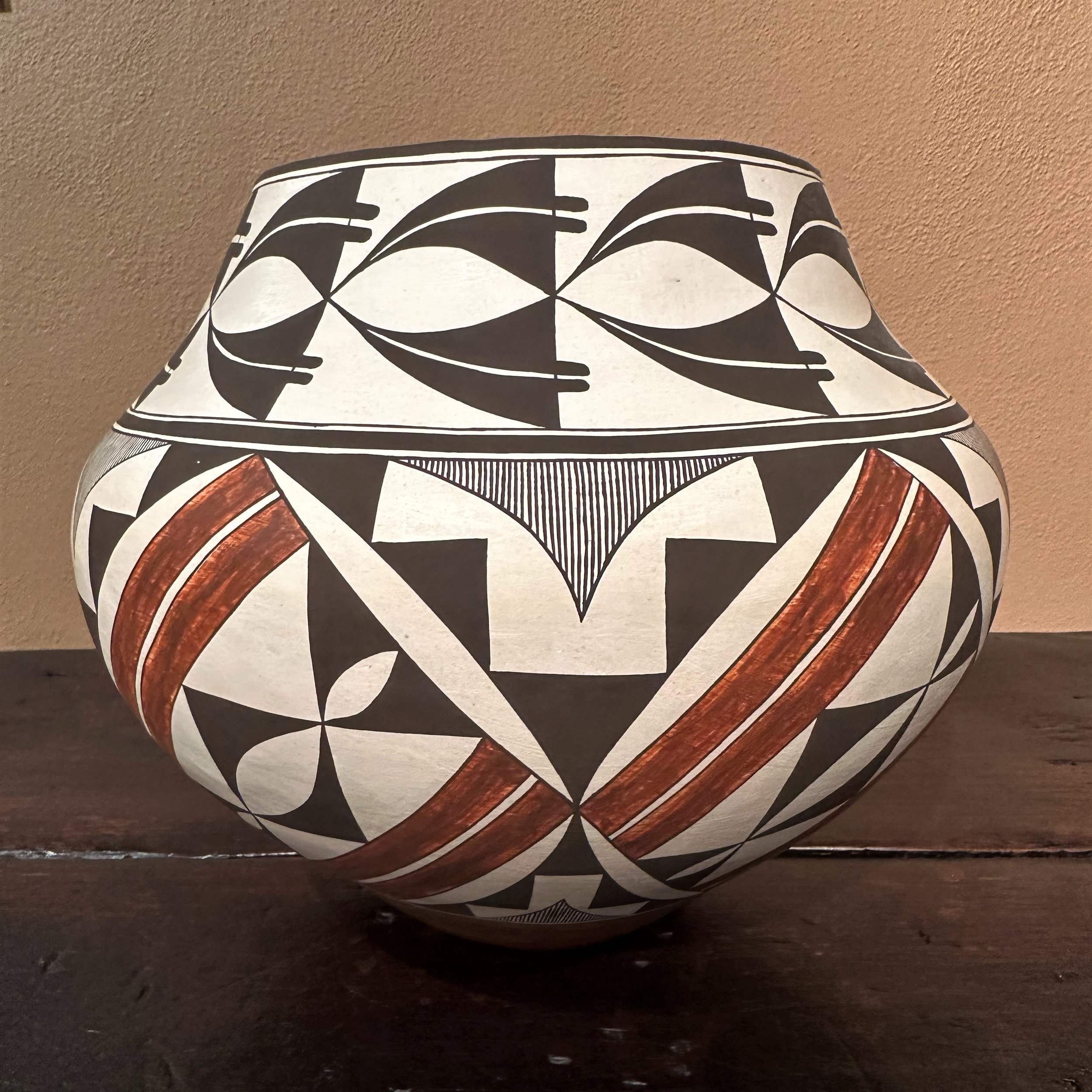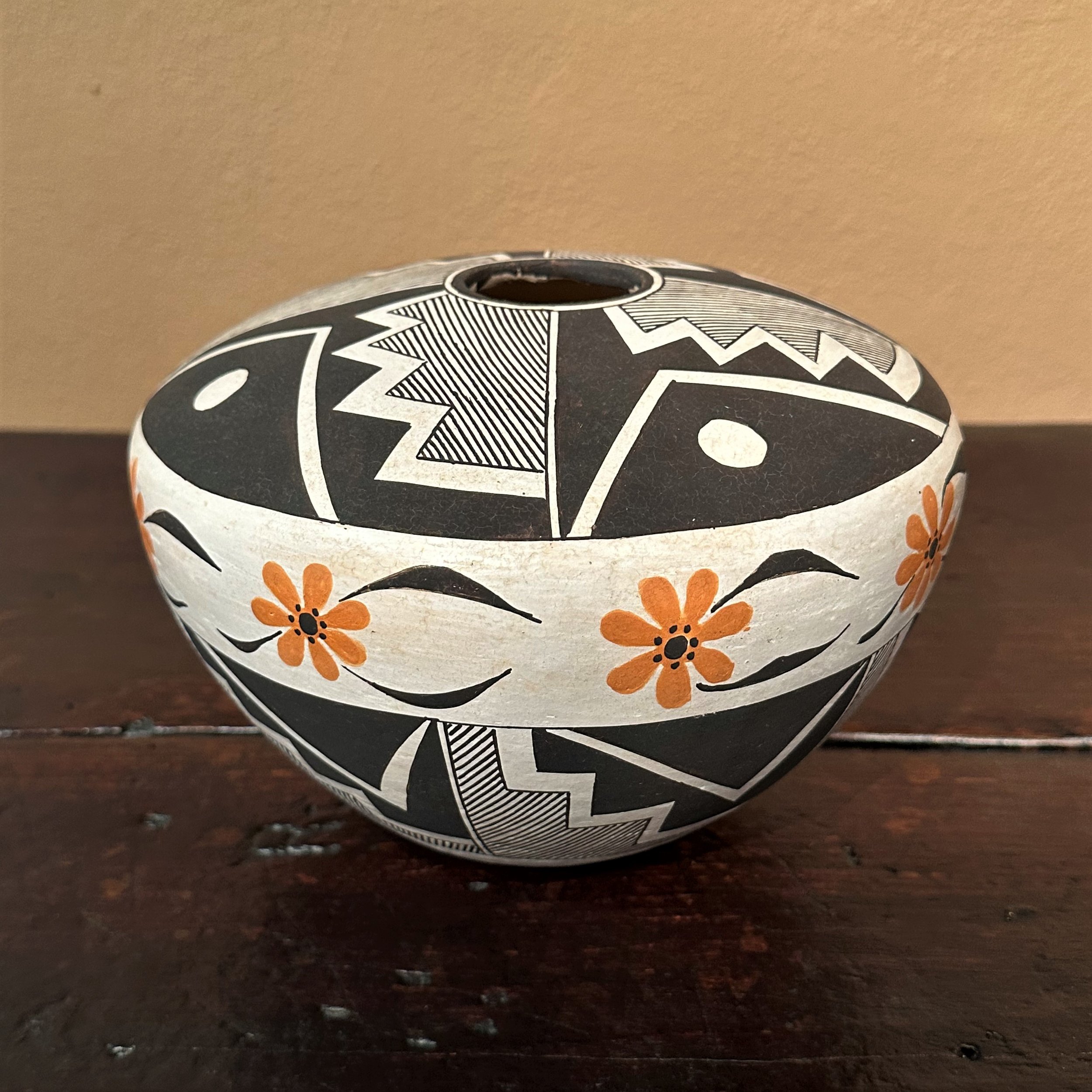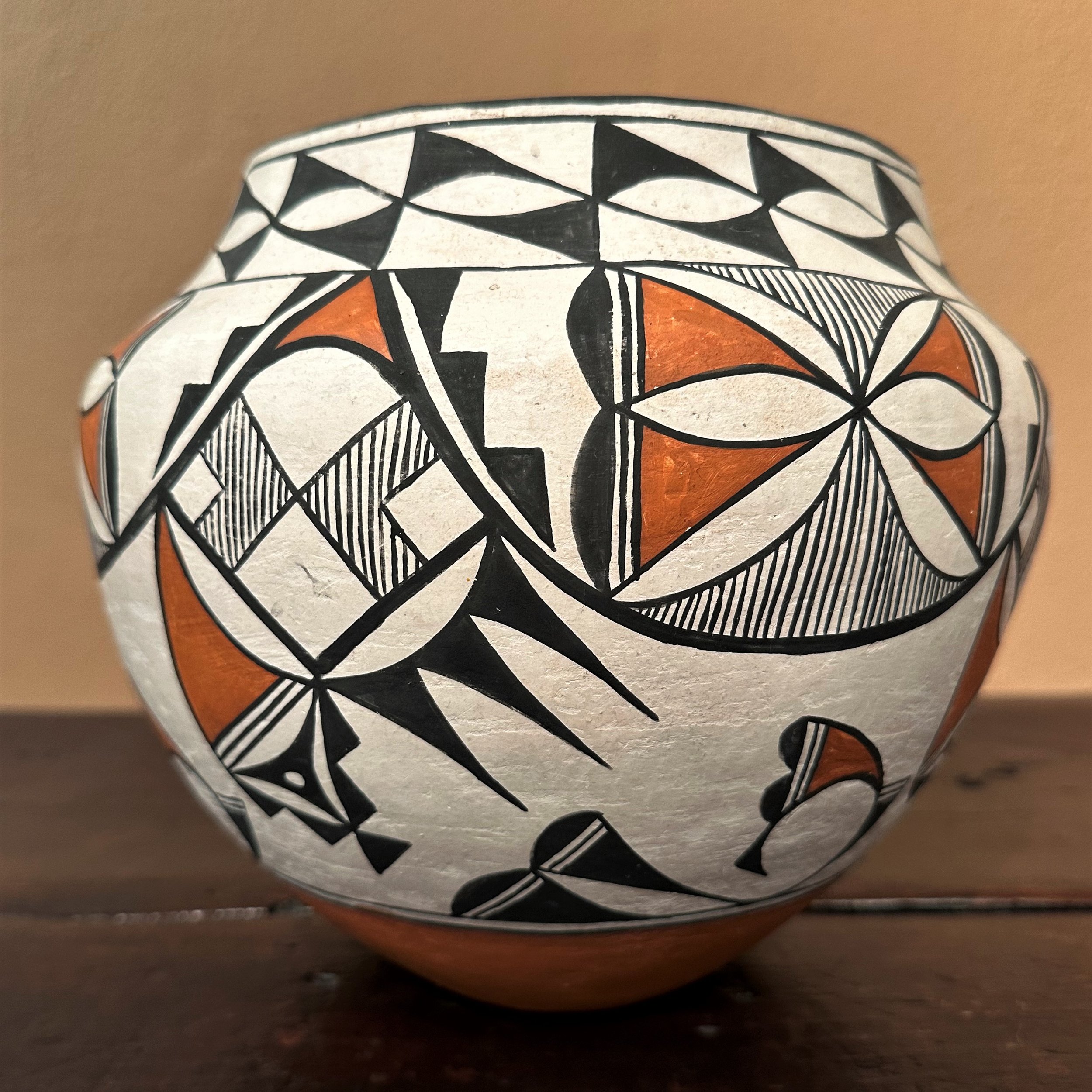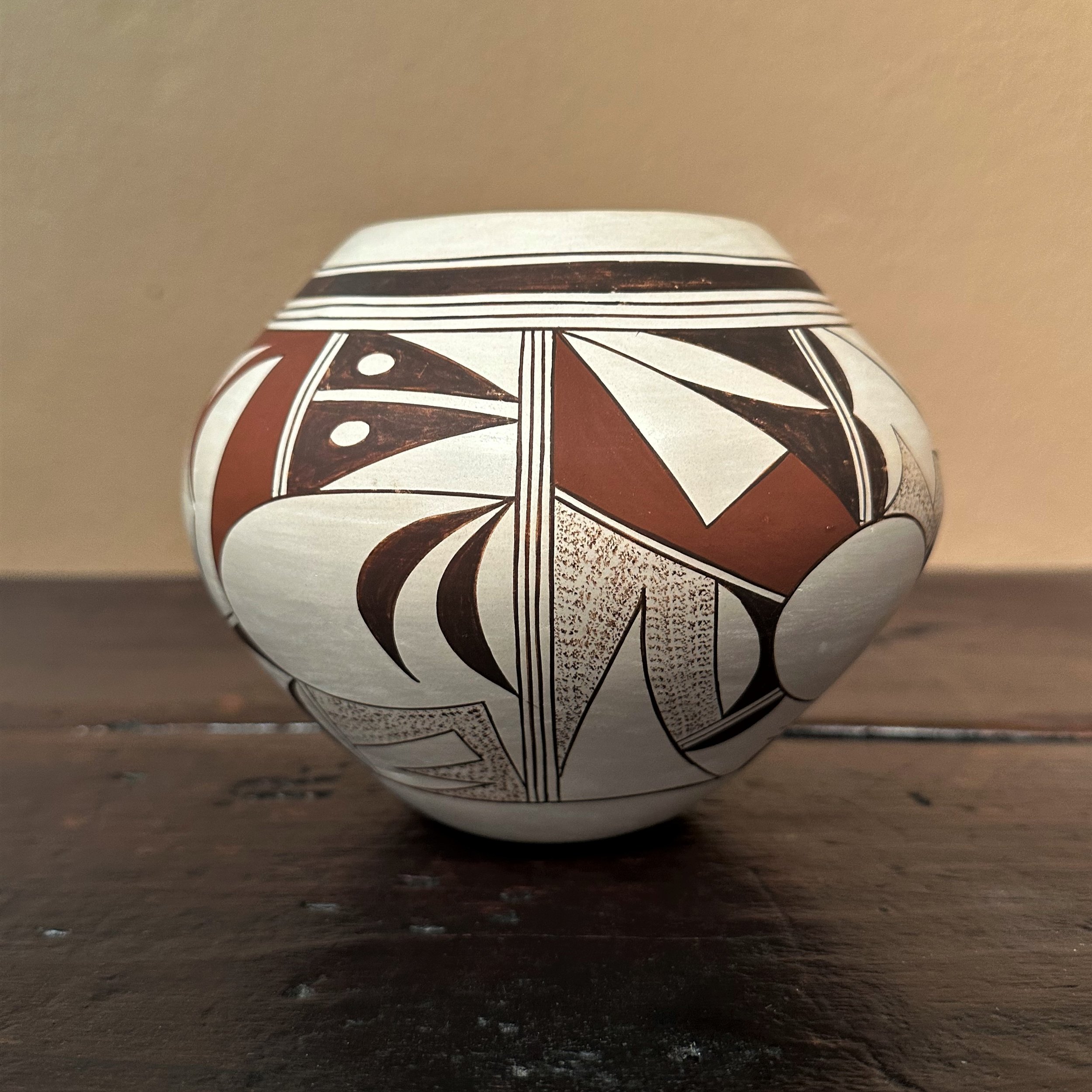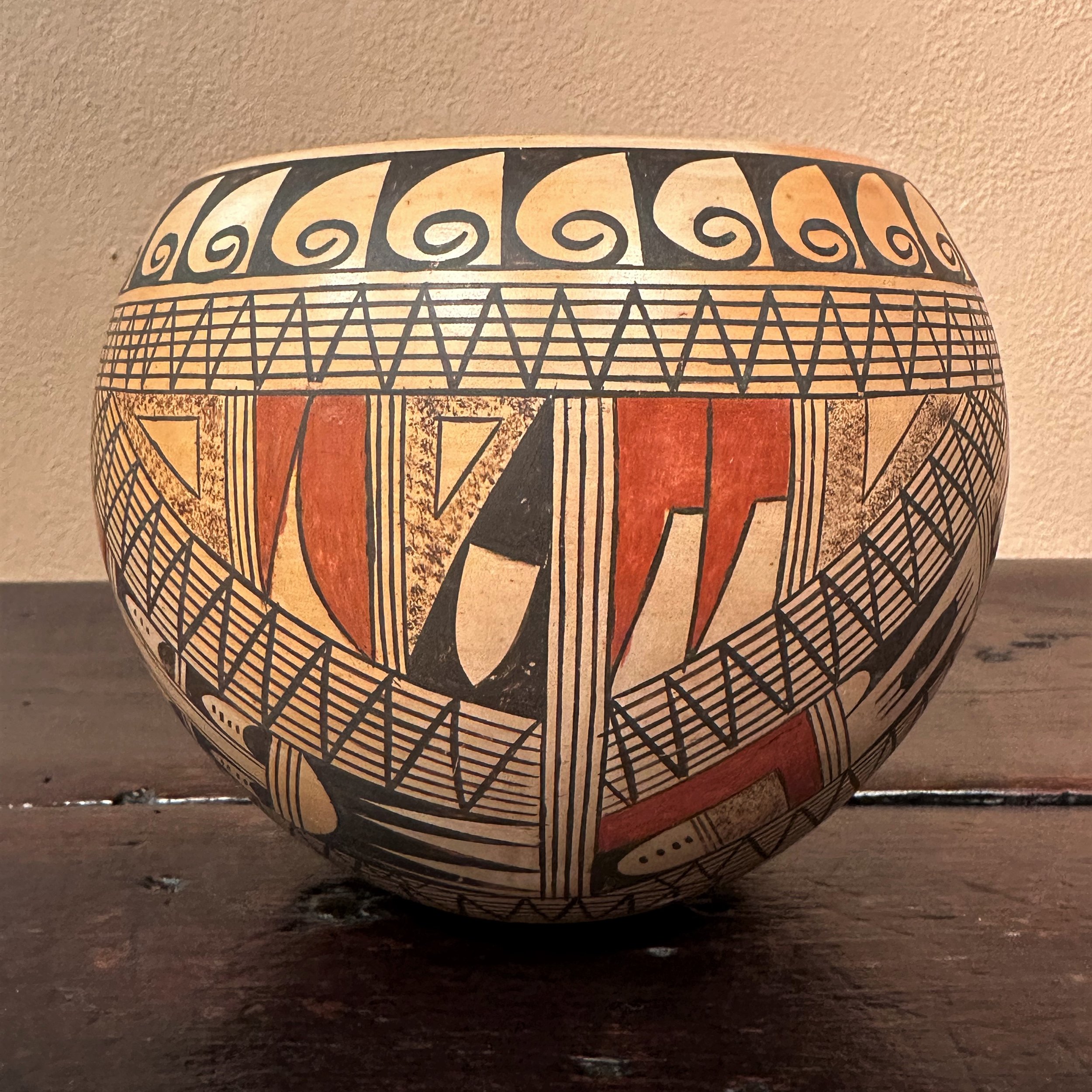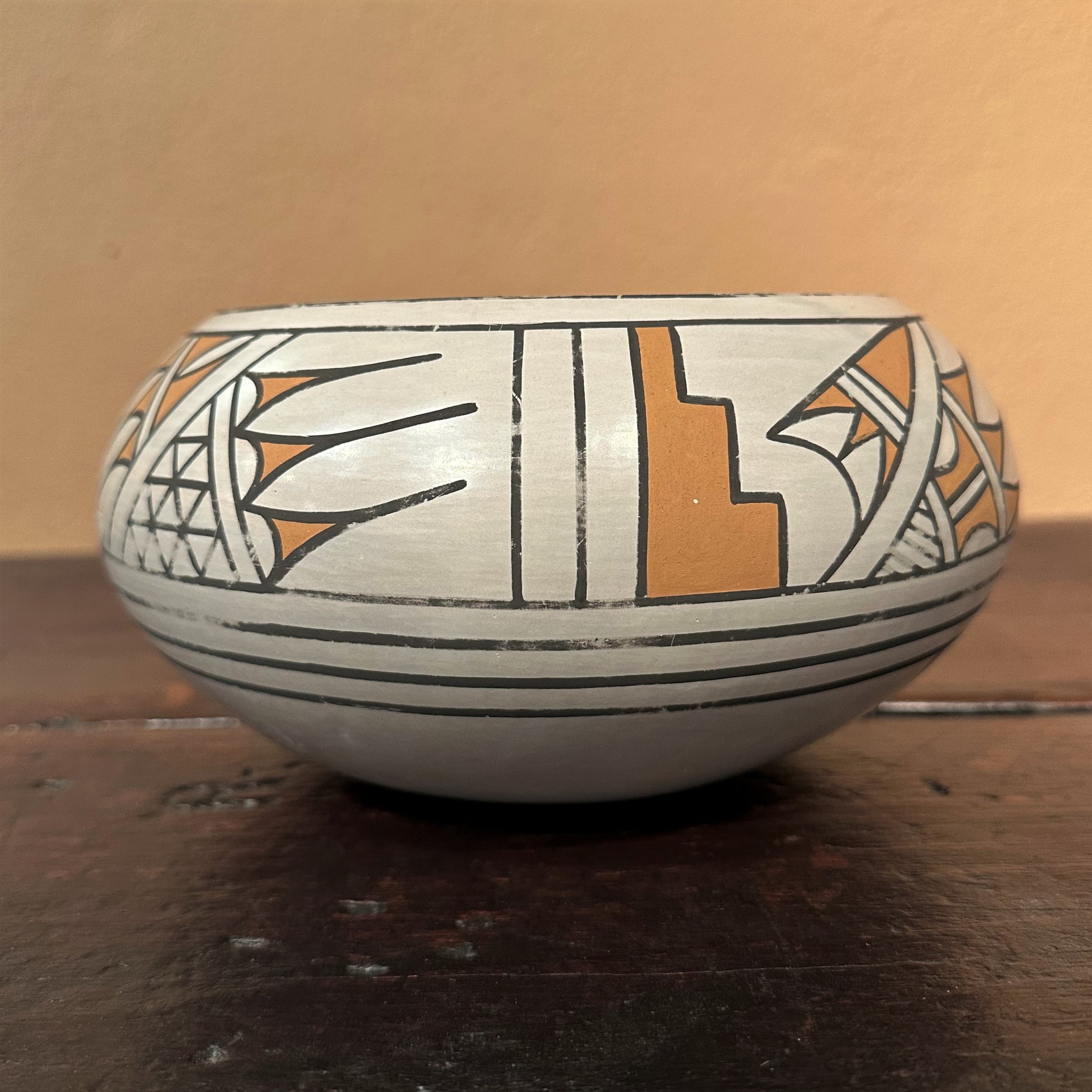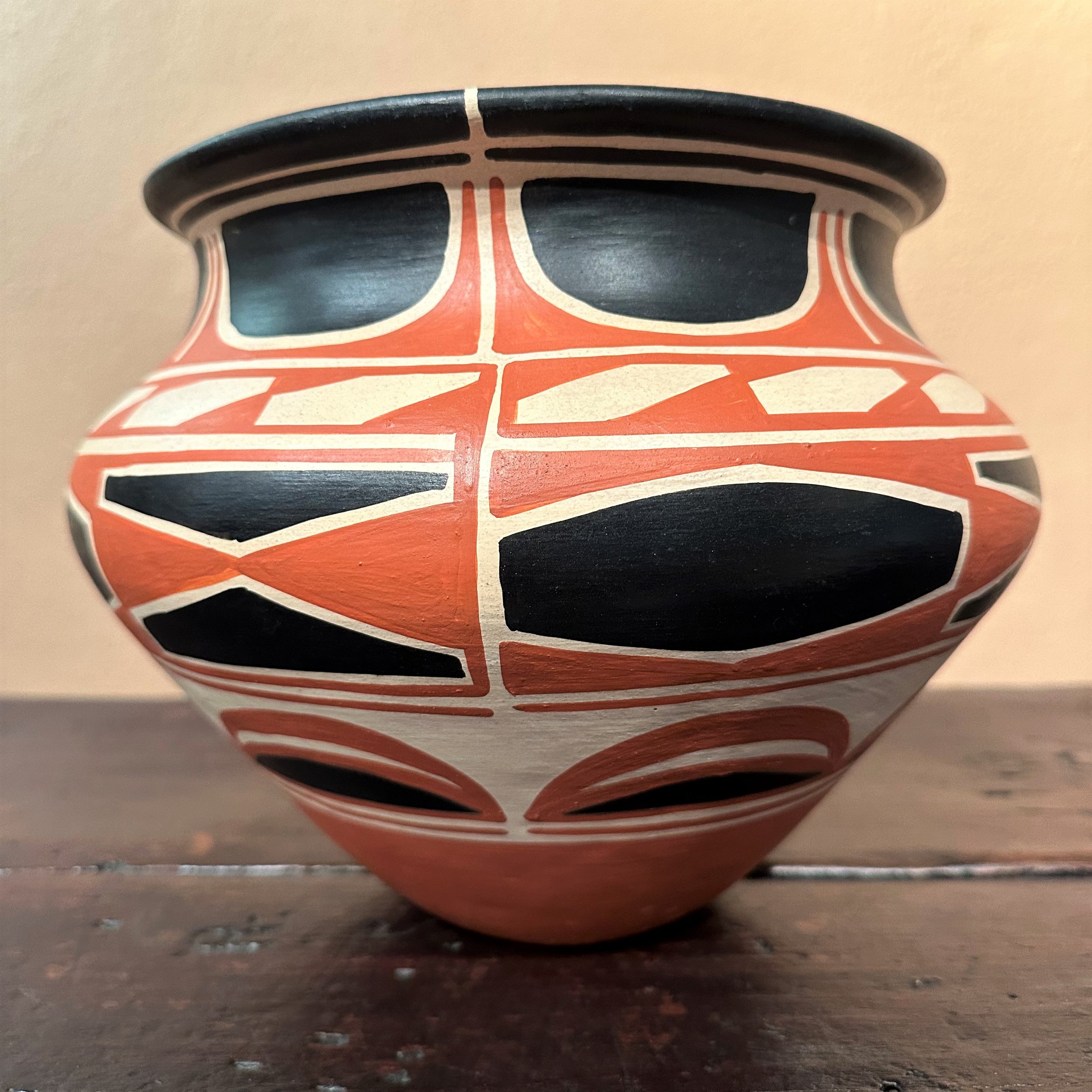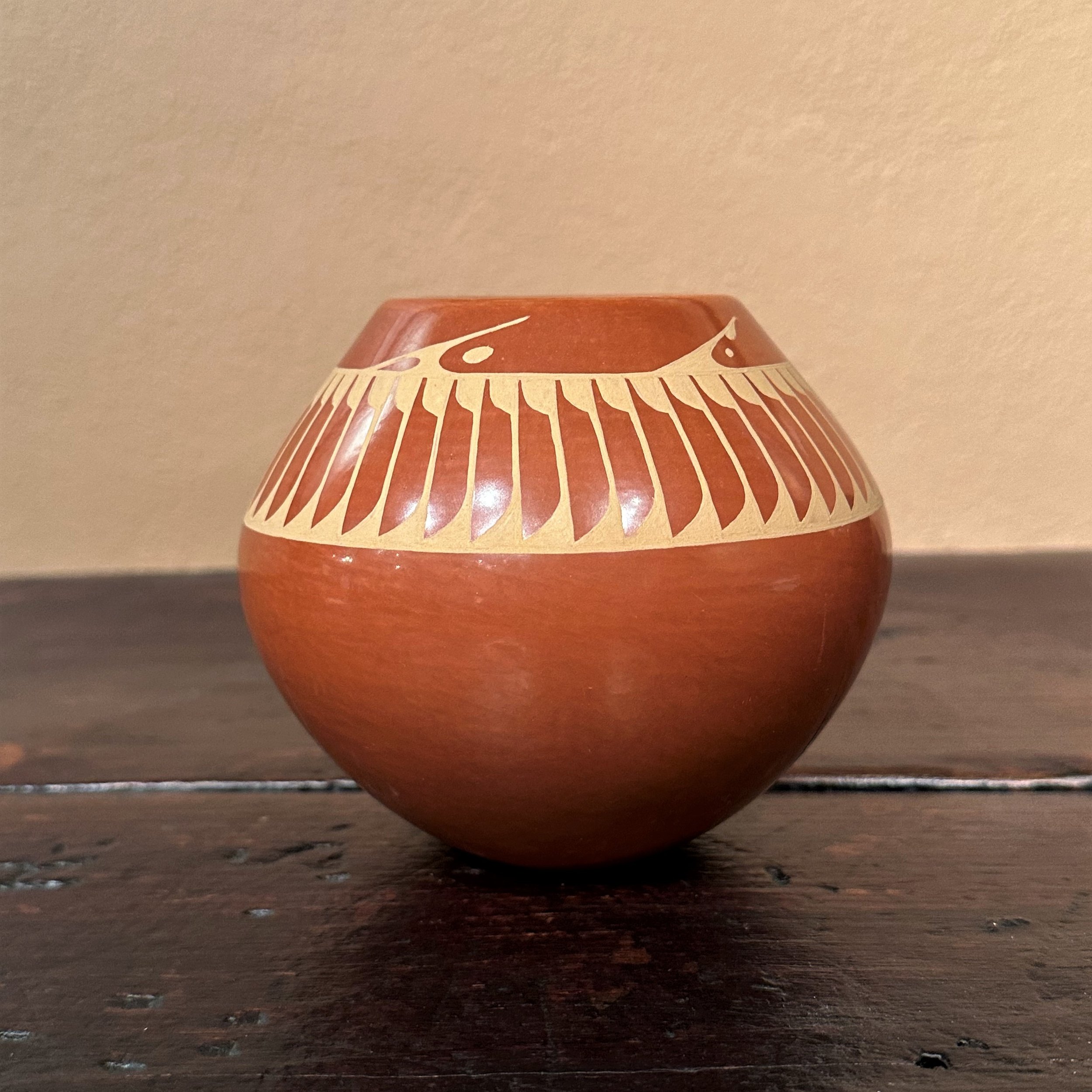Native American Pottery: Pieces of Cultural Tradition
/We talk a lot about our paintings and bronzes, but Nedra Matteucci Galleries is also home to countless pieces of Native American pottery, each with its own age-old technique and cultural tradition behind it. It’s an honor to represent these Native Southwestern artists and continue to bring their craftsmanship to new generations.
Acoma Pueblo
The Acoma Pueblo is famous for its vibrantly decorated pottery, usually seen in orange and tan with geometric motifs that represent nature. The pots typically have thin walls, fine lines and eye-catching designs.
Originally, the pottery was produced for practical purposes, such as water jugs for long hunts, seed jars for storing seeds to plant in growing season, and a variety of other uses.
Today, they’re valued not only as the stunning art pieces they are, but as vessels of cultural memory and preservation. The following examples are just a few of the incredible Acoma pots currently available in the gallery.
Barbara Cerno & Joseph Cerno, Sr. - Acoma Polychrome Pot, 10 x 12”
Carrie Chino - Acoma Polychrome Pot, 6 x 8 ¼”
S. Martinez - Acoma Polychrome Pot, 8 x 8 ½”
Hopi Pueblo
The people of the Hopi/Tewa Pueblo in Northeastern Arizona and Northwestern New Mexico have been accomplished potters for hundreds of years. Over that time, they developed a distinctive style, which includes the use of at least three colors (polychrome) on a polished surface, usually in a range of tan to apricot finishes.
Traditional methods include gathering and cleaning local clay to be coiled into the desired shapes and firing outdoors. The designs found in their work are most often depictions of animals, lightning, rain and Hopi religious symbols.
Here are just a few on display at the gallery:
Frog Woman (Joy Navasie) - Hopi Polychrome Pot, 5 ½ x 6 ½”
Rodina Huma - Hopi Polychrome Pot, 5 ½ x 6 ½”
San Ildefonso Pueblo
Black-on-black pottery is one of the most well-known art forms to come out of New Mexico. It was inspired by an archaeological dig site at the modern day Bandelier National Monument, which uncovered sherds of black-on-black pottery from the twelfth to seventeenth centuries. This discovery led to the experimentation and development of today’s black-on-black ware by Maria Martinez and her husband, Julian, in the 1910s.
They discovered that, during the firing process, putting powdered manure to smother the fire yet retaining the heat removed the oxygen from the process, leaving a stunning black vessel with designs in matte black.
Apart from blackware, the San Ildefonso Pueblo also produces pottery of other varieties, including redware and polychrome-style pieces.
Santana Roybal Martinez & Adam Martinez - San Ildefonso Blackware Vase, 8 ½ x 6”
Blue Corn (Crucita Gonzales Calabaza) - San Ildefonso Polychrome Pot, 4 x 8”
Santo Domingo Pueblo
The Kewa people of the Santo Domingo Pueblo have lived in the northern New Mexico region since the 1200s, but developed their version of pottery production in the mid-1880s. Prior to this, the Pueblo was more dedicated to jewelry-making, but was led into pottery work by a number of notable artisans such as the Aguilar family, Santana Melchor in the mid-1900s and a modern revival by Robert Tenorio beginning in the 1970s.
Their pieces are almost uniformly polychrome with cream-colored slip covered by red and black slip. Human figures and symbols are reserved strictly for ceremonial pots, so most Kewa pottery instead features simple geometric designs harkening from nature.
A quintessential example of their work is the following piece at the gallery by Robert Tenorio, hitting every trademark of traditional Kewa artistry.
Robert Tenorio - Santo Domingo Negative Polychrome Jar #504, 8 ¾ x 11 ½”
Santa Clara Pueblo
Another Pueblo in the region was responsible for developing new techniques in the firing of their pottery, which inspired artisans from nearby Pueblos like Maria Martinez. That was the Santa Clarans, the descendants of the ancient Puyé mesa-top dwellers who were driven closer to the Rio Grande by severe drought in the mid-1500s.
Their history of pottery production dates back over 300 years with their primary pieces being undecorated redware and blackware. That is until Sarafina Gutierrez Tafoya and her daughter, Margaret Tafoya, developed a unique form of pottery that came to be known as deep-carved blackware. Their famed bear claw design became synonymous with the Santa Clara Pueblo and remains one of their most recognizable symbols.
Potters of the Pueblo also developed techniques unique to the pueblo, including a technique called sgraffito (designs and textures scratched into the surface of the pot). They also turned away from strict development of small wares to make some of the largest examples of Native pottery found in the region.
Denny Gutierrez (Santa Clara) - Carved Round Redware Pot, 5 x 5”
Pablita Chavarria - Santa Clara Carved Bowl #319, 7 x 9”
While this is far from a complete list of the Southwest’s Pueblos and their styles of pottery, we hope this brief introduction to a few of the cultures and their techniques helps art and history lovers identify and further appreciate these important and beautiful works.
For more information about any of these pieces, please contact inquiry@matteucci.com.
